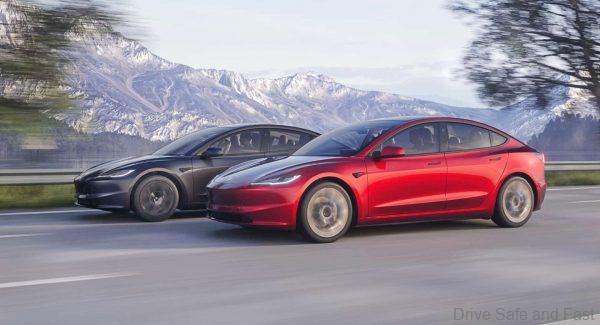Objectively Speaking, BYD Seal Is Better Value Than The Cheaper Atto 3
We ran the numbers and the BYD Seal is better value than its Atto 3 stablemate and Tesla Model 3.
Yesterday, the all-electric BYD Seal was launched in Malaysia with two variants available. This goes up against the Tesla Model 3, which was one of the best value-for-money EVs. While the Seal is the most expensive BYD product to be introduced in Malaysia, we ran the numbers and found that it’s actually better value-for-money than both the rival Tesla Model 3 and the less expensive BYD Atto 3. Here’s a breakdown.
Key Price and Spec Comparison
There are three models being compared here with two variants each for 6 total entries. Let’s look at how these models compare in terms of key specs. Except for price, the higher number is better.
| Brand | Model | Price | Power (PS) | Torque (Nm) | WLTP Range (km) | AC Rate (kW) | DC Rate (kW) |
| BYD | Atto 3 Standard Range | RM149,800 | 204 | 310 | 345 | 7 | 70 |
| BYD | Atto 3 Extended Range | RM167,800 | 204 | 310 | 420 | 7 | 80 |
| BYD | Seal Premium Extended Range | RM179,800 | 313 | 360 | 570 | 7 | 150 |
| BYD | Seal Performance AWD | RM199,800 | 504 | 670 | 520 | 7 | 150 |
| Tesla | Model 3 RWD | RM189,000 | 261 | 361 | 513 | 11 | 170 |
| Tesla | Model 3 Long Range AWD | RM218,000 | 399 | 511 | 629 | 11 | 250 |
Why The Atto 3 Is Worse Value Than The Seal
As the table above shows, the Atto 3 is significantly behind the Seal and Model 3 in terms of power, torque, range and DC Fast Charging speeds. Yes, it’s got a sub-RM150,000 starting price, but most will find the 345km range of the base model unappealing and opt for the 420km Extended Range model.

This version of the Atto 3 is about RM12,000 or just 7% cheaper than the base model Seal while offering 53% less power, 16% less torque, and 35% less range, with much slower DC charging capabilities. It’s a much worse deal overall.

Is The BYD Seal A Better Buy Than The Model 3?
To be fair, the Tesla Model 3 is still trading blows with the Seal, so BYD didn’t exactly knock things out of the park. Right off the bat, the Seal has worse charging speeds for both AC and DC charging. Hands down, it’s a Tesla win here where it can make a big difference though seriously consider cars with 22kW AC charging if you really want to save time.

The base model Seal beats the base Model 3 in terms of output and performance slightly, plus has 11% more range while costing about 5% less money. The top tier Seal offers a lot more output and performance than the top tier Model 3, but is beat in terms of range. Here it is in numbers.
| Brand | Model | Price | Power (PS) | Torque (Nm) | WLTP Range (km) | AC Rate (kW) | DC Rate (kW) |
| BYD | Seal Premium Extended Range | RM179,800 (-5%) | 313 (+20%) | 360 (=) | 570 (+11%) | 7 | 150 |
| Tesla | Model 3 RWD | RM189,000 | 261 | 361 | 513 | 11 | 170 |
| Brand | Model | Price | Power (PS) | Torque (Nm) | WLTP Range (km) | AC Rate (kW) | DC Rate (kW) |
| BYD | Seal Performance AWD | RM199,800 (-9%) | 504 (+26%) | 670 (+31%) | 520 (-21%) | 7 | 150 |
| Tesla | Model 3 Long Range AWD | RM218,000 | 399 | 511 | 629 | 11 | 250 |
As you can see, BYD are throwing a lot of performance your way with the Seal, but they are not able to match Tesla’s charging speed capabilities, and this is an easy metric to compare as charge time depends on a lot of factors chiefly battery state of charge and charger capability. Depending on who you ask, faster charging and longer range is more important than more performance. I would say the Seal base model is a better buy than the Model 3 RWD but the Model 3 Long Range AWD is a better package than the Seal Performance AWD despite being nearly RM20,000 more expensive.
